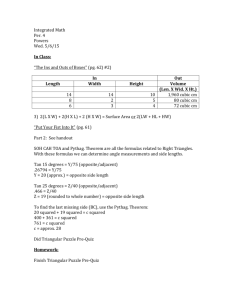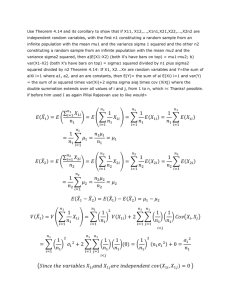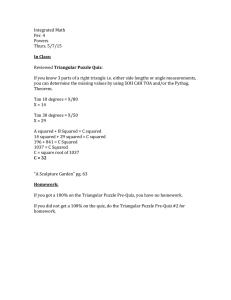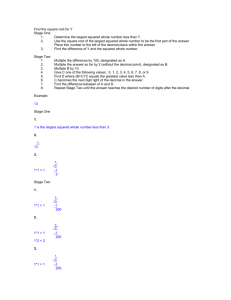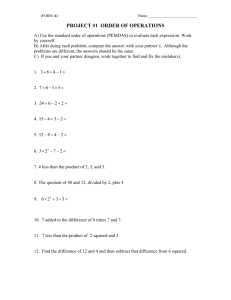MITOCW | MIT18_01SCF10Rec_40a_300k
advertisement
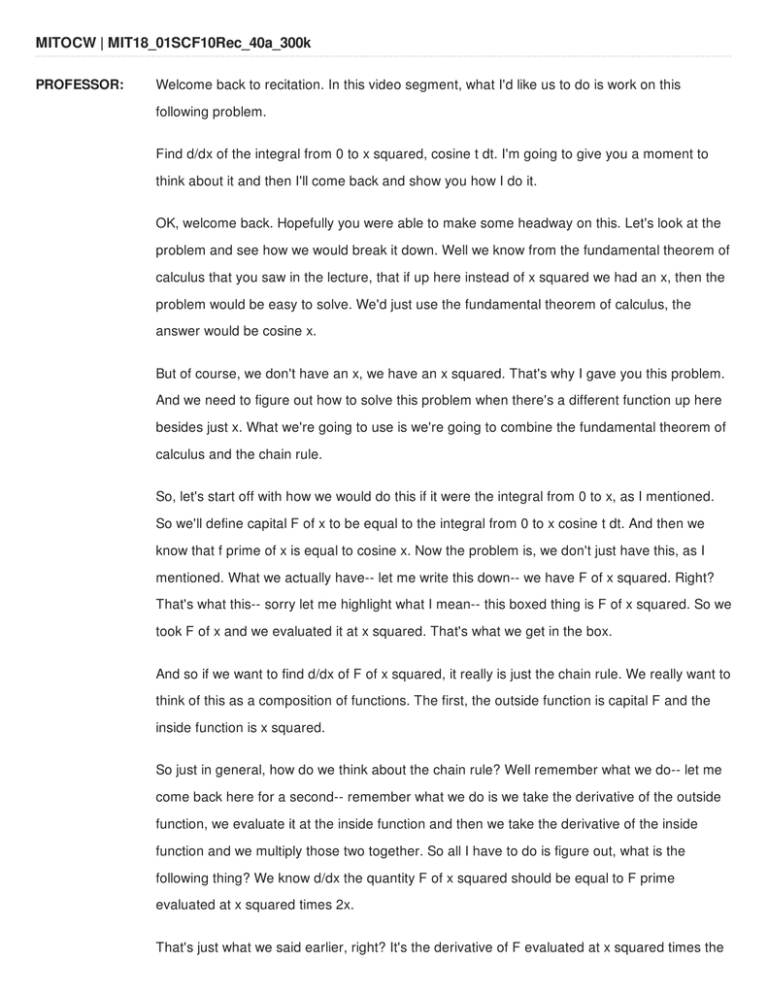
MITOCW | MIT18_01SCF10Rec_40a_300k PROFESSOR: Welcome back to recitation. In this video segment, what I'd like us to do is work on this following problem. Find d/dx of the integral from 0 to x squared, cosine t dt. I'm going to give you a moment to think about it and then I'll come back and show you how I do it. OK, welcome back. Hopefully you were able to make some headway on this. Let's look at the problem and see how we would break it down. Well we know from the fundamental theorem of calculus that you saw in the lecture, that if up here instead of x squared we had an x, then the problem would be easy to solve. We'd just use the fundamental theorem of calculus, the answer would be cosine x. But of course, we don't have an x, we have an x squared. That's why I gave you this problem. And we need to figure out how to solve this problem when there's a different function up here besides just x. What we're going to use is we're going to combine the fundamental theorem of calculus and the chain rule. So, let's start off with how we would do this if it were the integral from 0 to x, as I mentioned. So we'll define capital F of x to be equal to the integral from 0 to x cosine t dt. And then we know that f prime of x is equal to cosine x. Now the problem is, we don't just have this, as I mentioned. What we actually have-- let me write this down-- we have F of x squared. Right? That's what this-- sorry let me highlight what I mean-- this boxed thing is F of x squared. So we took F of x and we evaluated it at x squared. That's what we get in the box. And so if we want to find d/dx of F of x squared, it really is just the chain rule. We really want to think of this as a composition of functions. The first, the outside function is capital F and the inside function is x squared. So just in general, how do we think about the chain rule? Well remember what we do-- let me come back here for a second-- remember what we do is we take the derivative of the outside function, we evaluate it at the inside function and then we take the derivative of the inside function and we multiply those two together. So all I have to do is figure out, what is the following thing? We know d/dx the quantity F of x squared should be equal to F prime evaluated at x squared times 2x. That's just what we said earlier, right? It's the derivative of F evaluated at x squared times the derivative of x squared. So now I just have to figure out what this is. Well let's go back to the other side and see what we wrote that F prime was. If we come over here, we see F prime at x is just cosine x. So F prime at x squared is going to be this function evaluated at x squared. That's just cosine of x squared. So we see over here, we just get cosine x squared times 2x. And because I'm a mathematician, I want to write the 2x in front before I finish. Because otherwise I get confused. So the answer here is just 2x times cosine x squared. Now I want to point out really what we did here. This is the answer to this particular problem, but we can now solve problems in general, when I put any function up here, any function of x up here. Right? Ultimately, all I did was I used the fundamental theorem of calculus and the chain rule. So any function I put up here, I can do exactly the same process. I would define F of x to be this type of thing, the way we would define it for the fundamental theorem of calculus. I would know what F prime of x was. And then I would have to evaluate F at a, at this function up here, whatever I put up there. So in this case it was x squared. I could have made it natural log x. I could've made it some big polynomial or something more complicated. Right? And once I do that, I just follow this same process. Now, instead of the x squared here I would have that other function. So I'd evaluate capital F at whatever function that is times the derivative of that function. It's exactly the same process. So I want to point out that this is a bigger situation than I had before, or a bigger situation than just this little problem. So, just so you understand that. OK? So again, I just want to say one more time. Now you know how to solve problems where you have any other function of x up here and you want to take the derivative of this kind of expression of an integral with another function of x up there. All right, I think I'll stop there.

